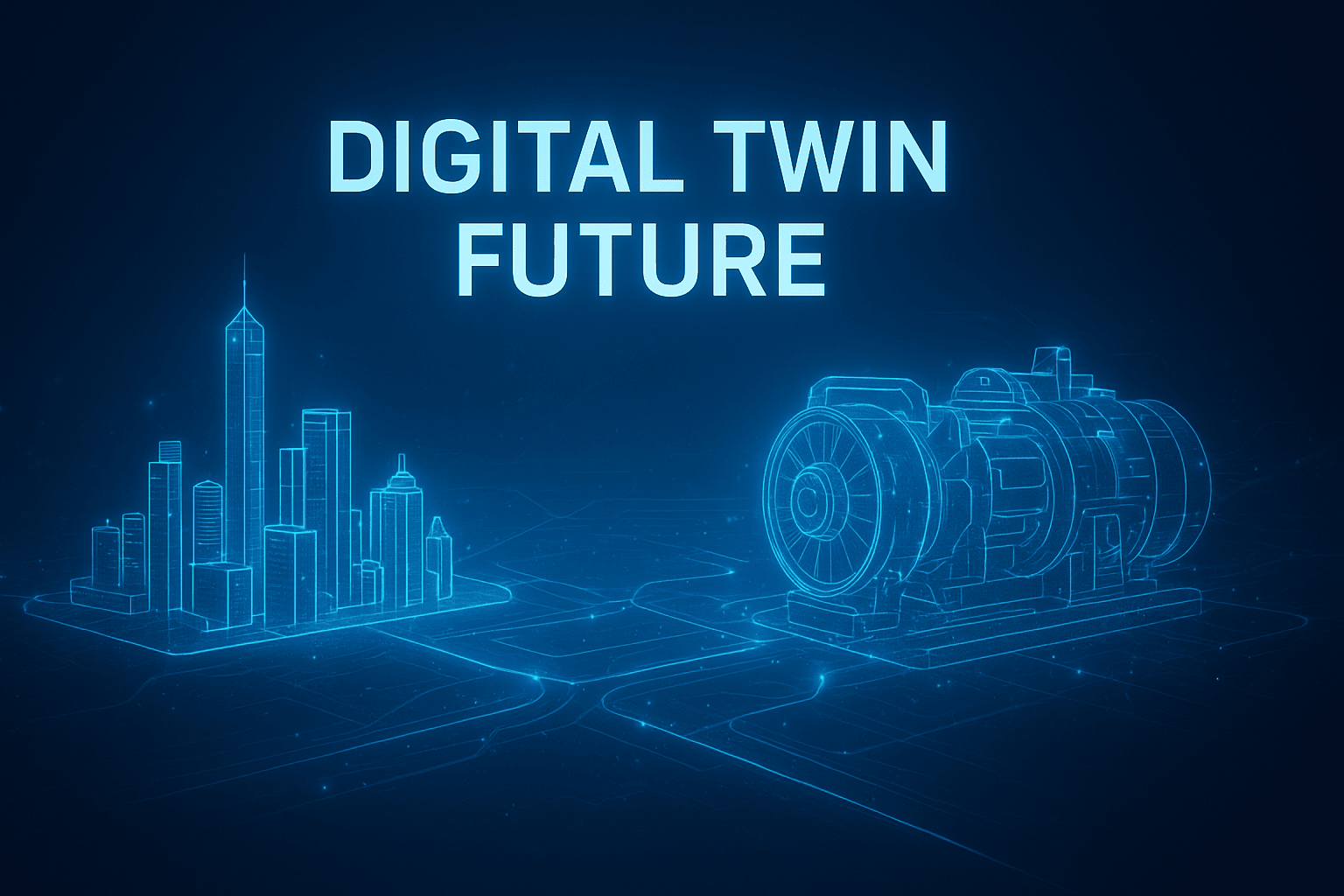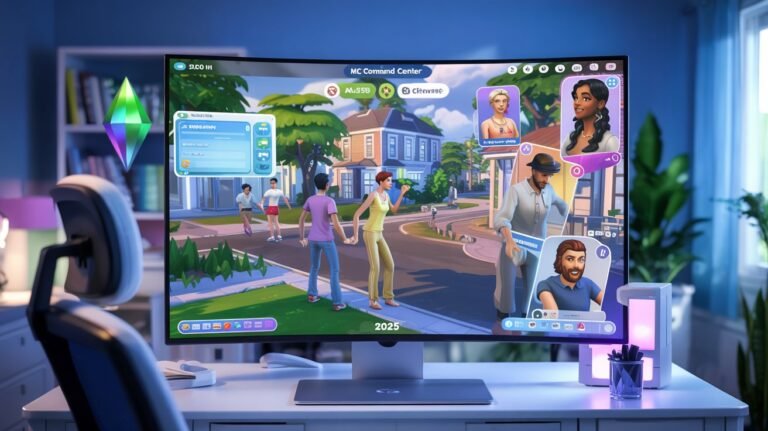How Digital Twin Technology is Transforming Business in 2025
Introduction
In the fast-paced digital economy of 2025, businesses are under immense pressure to innovate, optimize, and stay ahead of the competition. Among the technologies driving this transformation, digital twin technology stands out as a game-changer. Once considered futuristic, digital twins are now mainstream tools reshaping industries ranging from healthcare and manufacturing to smart cities and retail.
At its core, a digital twin is a virtual representation of a physical object, system, or process that receives real-time data to mirror its behavior and performance. This powerful concept allows businesses to simulate scenarios, predict outcomes, and improve decision-making without disrupting physical operations.
In this article, we’ll explore how digital twin technology is transforming businesses in 2025, its benefits, challenges, real-world examples, and what the future holds for organizations adopting this revolutionary tool.
Table of Contents
What is Digital Twin Technology?
Digital twin technology refers to creating a virtual model of a physical entity, whether it’s a machine, a building, a supply chain, or even the human body. This model continuously updates through data collected from IoT sensors, cloud platforms, and AI analytics, making it a dynamic, living replica.
By simulating processes, digital twins allow businesses to test “what-if” scenarios without physical risks. For example, an airline can simulate engine performance under different conditions, or a hospital can test treatment plans on a patient’s digital twin before applying them in reality.
The result is a smarter, more efficient way to manage assets, reduce costs, and innovate faster—core drivers of success in today’s hypercompetitive markets.
The Evolution of Digital Twin Technology
The concept of digital twins has its roots in the early 2000s when NASA used virtual models to monitor and maintain spacecraft. However, it wasn’t until the convergence of IoT, big data, and AI in the last decade that digital twins became viable for mainstream business use.
- 2000s: NASA pioneered digital replicas for aerospace systems.
- 2010s: Industry 4.0 accelerated adoption in manufacturing.
- 2020s: Affordable cloud computing, advanced analytics, and widespread IoT devices brought digital twins to healthcare, logistics, retail, and smart cities.
- 2025: Digital twin technology is projected to be a $110+ billion market, with adoption spreading rapidly across enterprises and SMEs.
This evolution reflects a larger trend: businesses moving from reactive strategies to proactive, predictive, and even autonomous systems powered by real-time insights.
How Digital Twin Technology Works
Digital twin technology functions through three essential components:
1. Physical Object or Process
This could be a factory machine, a hospital ward, a supply chain, or even an entire city.
2. Virtual Replica
A 3D or data-driven model is created using design specifications, operational data, and AI-based predictions.
3. Real-Time Data Connection
Sensors and IoT devices continuously feed data to the digital twin. Cloud platforms and AI analytics process this information, ensuring the twin remains accurate and dynamic.
Together, these elements create a feedback loop where the physical and digital worlds continuously inform and optimize each other.
Key Benefits of Digital Twin Technology in 2025
Businesses in 2025 are realizing enormous value from digital twins. Some of the most impactful benefits include:
1. Predictive Maintenance
By monitoring machines in real-time, digital twins can forecast equipment failures before they happen, reducing downtime and saving millions in lost productivity.
2. Cost Efficiency
Running simulations virtually reduces the need for costly physical trials. Automotive firms, for instance, test car designs in digital form long before prototypes are built.
3. Faster Innovation Cycles
New ideas can be modeled, tested, and optimized in weeks instead of months, allowing businesses to bring products to market faster.
4. Enhanced Customer Experience
Digital twins allow retailers and healthcare providers to personalize experiences by predicting customer preferences and health outcomes.
5. Sustainability and Resource Efficiency
By optimizing energy usage, logistics, and material consumption, digital twins help companies meet sustainability goals while improving their bottom line.
👉 Read Also Our This post: Explore more about how businesses are innovating in digital spaces.
Top Industries Leveraging Digital Twin Technology
1. Manufacturing
Factories use digital twins to monitor assembly lines, predict breakdowns, and optimize workflows.
2. Healthcare
Hospitals employ patient-specific digital twins to test treatments, improve diagnostics, and enhance personalized medicine.
3. Energy & Utilities
Power companies use grid-scale twins to forecast energy demand and manage renewable energy sources.
4. Transportation & Logistics
Digital twins streamline supply chains, reduce delays, and improve fleet management.
5. Smart Cities
Governments use city-wide twins to reduce congestion, plan infrastructure, and cut carbon emissions.
Digital Twin Technology and Industry 4.0
The fourth industrial revolution thrives on the integration of IoT, AI, cloud computing, and automation—and digital twin technology is the catalyst that binds these elements together.
- IoT devices send live data to twins.
- AI interprets patterns and predicts outcomes.
- Cloud systems provide scalable computational power.
- Blockchain ensures secure, transparent data sharing.
Together, these technologies enable autonomous ecosystems, where factories self-correct, supply chains reroute automatically, and cities adapt in real time.
Challenges and Limitations
Despite its promise, digital twin technology faces barriers:
- High Costs: Infrastructure and sensors can be expensive for SMEs.
- Cybersecurity Risks: Sensitive data requires strong protection.
- Integration Issues: Legacy systems often resist compatibility.
- Skills Gap: Trained professionals are still in short supply.
- Data Accuracy: Poor input leads to unreliable digital twins.
Businesses that overcome these challenges are better positioned to unlock the full potential of digital twins.
The Future of Digital Twin Technology in 2025 and Beyond
Looking forward, trends shaping digital twins include:
- SME Adoption through affordable cloud solutions.
- Integration with AR/VR and the Metaverse, allowing immersive simulations.
- Sustainability Applications for energy savings and climate resilience.
- AI-Powered Predictive Ecosystems where twins act autonomously.
- Sector-Specific Innovations like personalized healthcare twins, fleet-wide vehicle twins, and retail experience simulations.
External Context: A recent report from McKinsey & Company highlights how digital twins will drive efficiency and sustainability across industries globally.
By 2030, it is expected that most physical assets—from factories to cities—will have digital counterparts guiding decision-making in real time.
Case Studies & Real-World Examples
Siemens – Manufacturing Optimization
- Problem: Inefficient production lines and costly downtime.
- Solution: Factory-wide digital twins to test workflows and predict failures.
- Results: Reduced downtime, faster product cycles, and greater efficiency.
Philips Healthcare – Patient-Specific Twins
- Problem: Generic treatments delayed patient recovery.
- Solution: Organ-level digital twins using wearable and diagnostic data.
- Results: Safer, more effective treatments and improved patient outcomes.
Singapore – Virtual Singapore Smart City
- Problem: Urban congestion and sustainability challenges.
- Solution: A nationwide 3D digital twin to simulate traffic, infrastructure, and energy.
- Results: Smarter planning, reduced congestion, and sustainable growth.
Conclusion
In 2025, digital twin technology is more than a buzzword—it is a transformative force shaping industries worldwide. From reducing costs and boosting efficiency to advancing sustainability and creating smarter cities, digital twins are becoming indispensable to modern business strategies.
While challenges exist—costs, security risks, and skills shortages—the momentum is undeniable. Companies that embrace digital twin technology today will not only thrive but also lead the way into a future where physical and digital realities work hand in hand.
The businesses of tomorrow are already here, and they are powered by digital twins.







